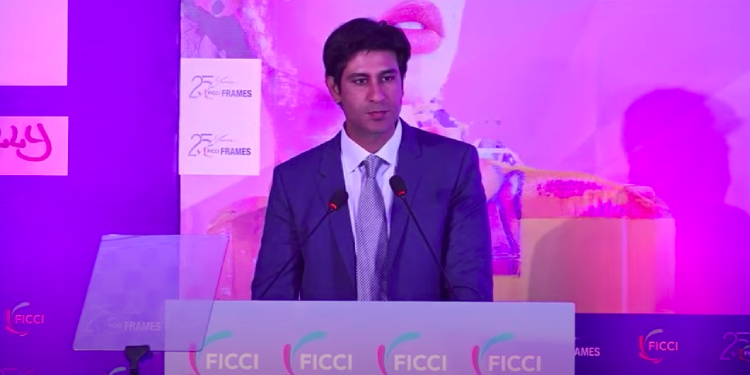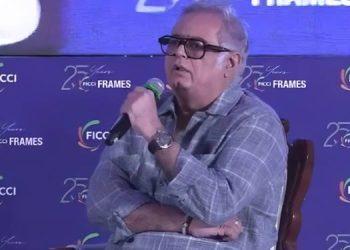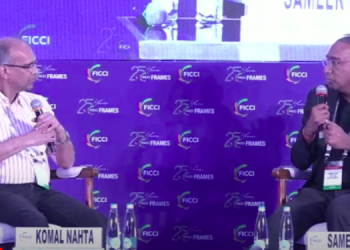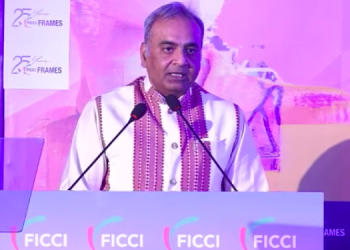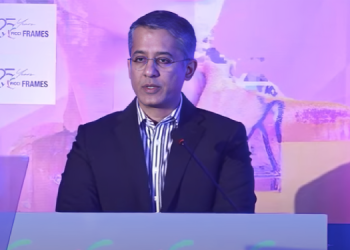At FICCI-FRAMES 2025, Arjun Nohwar, Co-Chair of the FICCI Media and Entertainment Committee and SVP & Country GM – India & South Asia at Warner Bros. Discovery, delivered a compelling address on the transformative shifts shaping the industry. He emphasized that this year’s FICCI report is not just about where the industry stands today, but where it is headed.
The Evolving Media Landscape
Nohwar outlined key trends that will define the future of India’s media and entertainment (M&E) sector:
- Linear Television’s Reinvention: Traditional TV is set to evolve by leveraging connected ecosystems and bundled experiences to remain relevant in the digital era.
- OTT Expansion: With over 550 million users, the over-the-top (OTT) streaming sector continues to thrive, driven by regional content, AI-powered personalization, and innovative business models.
- SME Advertising & Performance Marketing: The surge in small and medium enterprise (SME) advertising and the rise of performance-driven marketing are reshaping content consumption patterns.
- India as a Storytelling Hub: The country is no longer just a large consumer of content but is emerging as the epicenter of global storytelling.
Beyond these trends, Nohwar highlighted a fundamental shift in perspective: “We are no longer in the content business; we are in the experience business.”
The Battle for Engagement: A New Currency
Modern audiences no longer passively consume content—they engage with it. Their interaction spans across television, digital platforms, social feeds, and live events. With fleeting attention spans and rising expectations, the challenge is not just capturing attention but holding it.
“TV is no longer competing only with other networks,” Nohwar remarked. “It is now competing with second and third screens.”
Viewers today are not merely watching—they are scrolling, shopping, commenting, and engaging in real-time across multiple platforms. This shift is particularly evident in sports consumption, where fans participate in live discussions, fantasy leagues, and exclusive behind-the-scenes content. This demand for interactive entertainment extends beyond sports, with experiential media—gaming, theatrical releases, live events, and out-of-home (OOH) entertainment—becoming the fastest-growing category in the M&E industry. It now accounts for a quarter of all M&E revenues, second only to video content.
Regulatory Support: The Need for Stability & Simplification
For these sectors to reach their full economic and cultural potential, Nohwar called for regulatory stability and tax simplification. He urged the government to foster a progressive and transparent regulatory environment that incentivizes investment and fuels employment growth in the sector.
OTT: The Rise and the Challenge of Subscription Fatigue
OTT platforms have seen paid subscriptions grow by 11 million, reaching 111 million subscriptions across 47 million households. This surge is powered by increasing disposable incomes and smart TV adoption. However, a significant challenge is emerging—subscription fatigue.
To address this, new bundling models are gaining traction, integrating streaming, gaming, and commerce to create a seamless entertainment ecosystem. Nohwar emphasized that audiences no longer see platforms in isolation; they expect interconnected experiences across multiple services.
“The real opportunity lies in integration,” he said, envisioning a future where paid TV, OTT, gaming, and digital media co-exist and collaborate to deliver immersive experiences.
India’s Role in Shaping Global Media
Looking ahead, the next phase of growth in M&E will belong to those who adapt, innovate, and embrace a hybrid future. With the right investments and strategic approach, India’s M&E sector is poised not just to shape narratives but to define the future of global entertainment.
“The question is no longer whether India will lead in M&E,” Nohwar concluded. “It’s about how boldly we choose to define that leadership and command the space that we all occupy.”
As India cements its position at the forefront of the global media revolution, the industry’s ability to harness technology, engage audiences, and foster innovation will determine the scale of its influence in the years to come.

